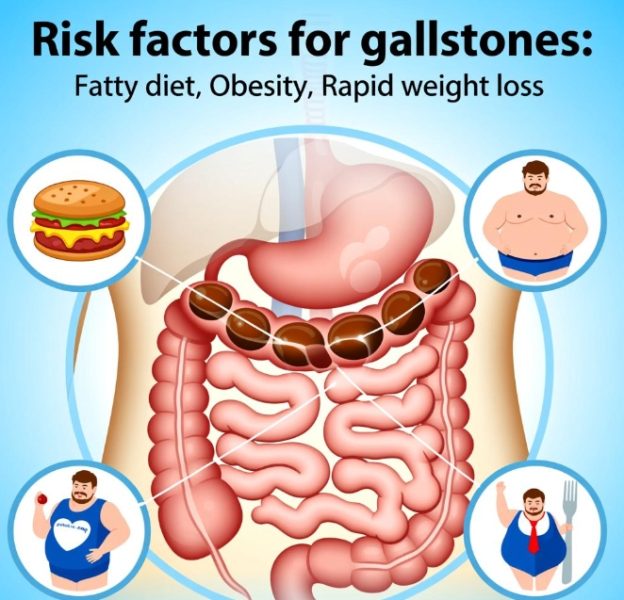Choledocholithiasis denotes the presence of calculi within the extra- or intrahepatic bile ducts. Symptoms arise when a stone obstructs flow, triggers inflammation, or provokes infection. The presentation ranges from silent imaging findings to life-threatening sepsis.
- Biliary colic
Epigastric or right-upper-quadrant pain begins 30–60 min post-prandially, peaks for ≥30 min, and radiates to the inter-scapular region or right shoulder. Movement does not relieve the discomfort, and analgesics are often required. - Nausea and vomiting
Gastric stasis and vagal reflexes produce repeated retching that may transiently lessen pain. - Fluctuating jaundice
Intermittent elevation of conjugated bilirubin produces scleral icterus, dark urine, and clay-coloured stools that wax and wane as stones impact or disimpact. - Cholangitis
Complete obstruction plus bacterial contamination yields Charcot triad: spiking fever with rigors, constant RUQ pain, and deepening jaundice. Suppurative forms add hypotension and mental confusion (Reynolds pentad), indicating pus under pressure. - Acute pancreatitis
Impaction at the ampulla obstructs both bile and pancreatic flow, leading to epigastric pain radiating to the back, intractable vomiting, and elevated serum amylase/lipase. - Tender hepatomegaly
The liver edge is smooth, hot and exquisitely tender; inspiratory arrest on palpation (Murphy sign) is frequent when concomitant acute cholecystitis is present. - Laboratory cholestasis
Serum alkaline phosphatase and γ-glutamyl transferase rise early; total bilirubin climbs steadily as obstruction persists.
| Symptom / Sign | Typical Presentation |
|---|---|
| Biliary colic | Post-prandial RUQ/epigastric pain ≥30 min |
| Nausea/vomiting | Repeated, may transiently relieve pain |
| Jaundice | Fluctuating, dark urine, pale stools |
| Cholangitis | Fever + RUQ pain + jaundice (Charcot triad) |
| Acute pancreatitis | Epigastric pain to back, ↑ amylase/lipase |
| Tender hepatomegaly | Hot, painful edge, positive Murphy sign |
| Laboratory | ↑ ALP, ↑ GGT, ↑ total bilirubin |

